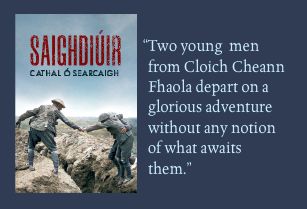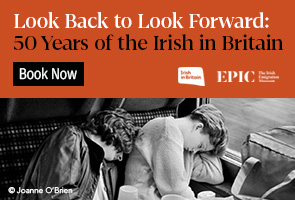Lord Frederick Cavendish and the Phoenix Park murders of 1882
Published in 18th–19th - Century History, Featured-Archive-Post, Features, Issue 3 (May/June 2014), Parnell & his Party, Volume 22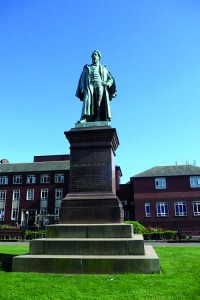
The monumental statue of Lord Frederick Cavendish at Barrow-in-Furness, Cumbria.
When Lord Frederick Cavendish was killed by the Invincibles in the Phoenix Park in May 1882, nothing like it had happened in British political life since Prime Minister Spencer Percival was shot dead in the lobby of the House of Commons in 1812. Percival is the only British prime minister to have been assassinated, and it appears that his killing was the result of a personal grievance. In contrast, Cavendish’s assassination was politically motivated. It was particularly gruesome—long surgical knives were the assassins’ chosen instruments—and this aspect greatly appealed to the instinct of the popular press for sensationalism, which was then coming to the fore.
The outrage that the killing caused amongst the political élite in Britain and the horror it engendered in the British public generally were both writ large within 10 Downing Street. In 1864 Cavendish had married Mrs Gladstone’s favourite niece, Lucy Lyttelton, and the young couple were part of the prime minister’s inner family circle. Lucy was the daughter of the fourth Lord Lyttelton and his first wife, Mary (née Glynne), a sister of Mrs Gladstone, and she was taken under Mrs Gladstone’s wing, so to speak, when her mother died in 1857. The couple made their home at Holker Hall, a Cavendish house at Cark-in-Cartmel, Cumbria. Portraits of both of them by Sir William Richmond hang there today, and there is a monumental statue of Lord Frederick nearby in Barrow-in-Furness.
Cavendish’s career
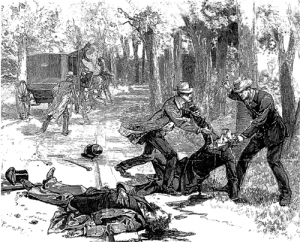
The murders of Chief Secretary Lord Frederick Cavendish and Under-Secretary Thomas Burke in Dublin’s Phoenix Park, as depicted in Le Monde, May 1882. Burke, not Cavendish, was probably the Invincibles’ intended target. (NLI)
Lord Frederick Charles Cavendish was born on 30 November 1836, the second son of the seventh duke of Devonshire, so he was nearly 46 when he died. His elder brother was the marquis of Hartington, who would later split with Gladstone over Home Rule for Ireland in 1886 and, after voting against, would become leader of the Liberal Unionists in parliament. He declined to become prime minster on no less than three occasions. To what extent Hartington’s opposition to Home Rule was influenced by the murder of his brother is a matter for speculation, though Lucy Cavendish was later a supporter of Home Rule despite the sorrow that she had suffered at the hands of Irishmen. Lord Frederick was educated at home by private tutors and at Trinity College, Cambridge, where he took a BA in 1858. From 1859 to 1864 he was private secretary to Lord Granville, leader of the Liberal Party in the House of Lords, and then, from 1865 until his death in 1882, Liberal MP for north-west Yorkshire. Gladstone was most assiduous in advancing his career: he became private secretary to Gladstone in 1872 during Gladstone’s first administration, and he served as a lord of the treasury from August 1873 until Gladstone’s government resigned in February 1874. When the Liberals returned to power in 1880, he was appointed financial secretary to the treasury. As Gladstone was at that time combining the office of chancellor of the exchequer with that of prime minister, it fell to Cavendish as financial secretary to do the routine work of the chancellor.
Appointment greeted with derision
When W.E. Forster quit as chief secretary for Ireland in May 1882 in protest at the so-called ‘Kilmainham treaty’, Cavendish succeeded him—but, unlike Forster, without a seat in the cabinet. Gladstone intended that the ‘treaty’ should inaugurate a policy of conciliation in Ireland, and his reason for appointing Cavendish was that the latter had, while at the treasury, drawn up a new land purchase scheme for Ireland; he was thought, therefore, to know something about Ireland and to be in favour of conciliation. His appointment, however, was greeted with incredulity—even derision. Cavendish had a speech impediment, and that seriously compromised his standing and effectiveness as a politician. But for his Cavendish name and the Gladstone connection it is unlikely that he would ever have held office. Nevertheless, he was regarded as pleasant, high-minded and industrious.
On his very first day in Dublin as chief secretary (6 May 1882), Cavendish was assassinated near the Viceregal Lodge in the Phoenix Park by the Irish National Invincibles, an extremist Fenian society, a splinter group of the Irish Republican Brotherhood, who may also have had links with the Land League, perhaps through the League’s treasurer, Patrick Egan. The details are well known: Cavendish knew Dublin reasonably well and, having met with officials in Dublin Castle immediately after his arrival in Dublin, he decided to walk to the Chief Secretary’s Lodge in the Phoenix Park (now the residence of the US ambassador). As he was walking along Chesterfield Avenue, a cab pulled up behind him and the under-secretary, Thomas Burke (the most senior Irish civil servant), got out and joined him. They walked amiably onwards but were then set upon by the Invincibles just opposite the Viceregal Lodge and were both killed.
Burke, not Cavendish, the target
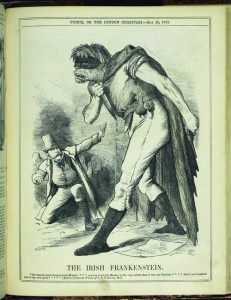
‘THE IRISH FRANKENSTEIN. “The baneful and blood-stained Monster * * * yet was it not my master to the very extent that it was my creature . . . Had I not breathed into it my own spirit?” * * * (Extracts from the Works of C.S. P-rn-ll, M.P.).’ Punch (20 May 1882) quotes from Mary Shelley’s Frankenstein to link Charles Stewart Parnell (left) with the murders. (British Library)
It is accepted that Burke, not Cavendish, was the Invincibles’ intended target. They had originally planned to assassinate Cavendish’s predecessor as chief secretary, W.E. Forster, but after Forster’s resignation they decided to kill Burke instead. On 5 May, the day before the actual assassinations, they had waited for Burke in the Phoenix Park but missed him. They returned the following day to carry out their grim task; unfortunately for Cavendish, he happened to be in Burke’s company on that occasion and died simply because he was in the wrong place at the wrong time. It is unlikely that the Invincibles knew the identity of the man who was with Burke. They killed him because he tried to defend his colleague.
Burke is himself an interesting figure, a scion of the Catholic landed gentry of County Galway and a grand-nephew of Cardinal Wiseman, the first Catholic archbishop of Westminster, in the wake of the re-establishment of a Catholic hier-archy for England and Wales in 1850. He had served in the office of the chief secretary in Dublin Castle since 1847, and was appointed under-secretary in 1869. He was a conscientious and hard-working official, and W.E. Forster—Cavendish’s predecessor—said of him that he was ‘the most efficient permanent official I ever came across, and my only fear about him is that he will literally work himself to death’. He was closely identified with and involved in the coercion policies espoused by Forster in response to the first Land War from 1879 onwards, and no doubt this explains why the Invincibles targeted him for assassination. It is notable that, to quote from the entry on Burke in the Dictionary of Irish biography,
‘Although Irish national leaders were quick to denounce what had happened, some of their statements avoided mentioning Burke or did not condemn his killing in quite the same unequivocal terms as that of Cavendish, whose appointment had generally been welcomed in Ireland’.
This may confirm that some Land League elements were in cahoots with the Invincibles, and that those convicted of the murder of Cavendish and Burke were only foot-soldiers, behind whom were more important shadowy figures who masterminded and financed the gruesome deed. The chief suspect is Patrick Egan, treasurer of the Land League, who strongly disapproved of the more moderate approach towards land agitation which the ‘Kilmainham Treaty’ presaged. He mysteriously disappeared after the murders—first to Paris but ultimately to the United States.
Donal McCracken, in his recent biography of the famous Inspector Mallon of the Dublin Metropolitan Police, suggests that Mallon, unable to get hard evidence against Egan, may have connived in his flight to safety in return for information about the murders. Such pragmatism would not have been untypical of Mallon. In fact, the murders of Burke and Cavendish brought Mallon his greatest success: he was fêted for securing the convictions of the Invincibles. Cavendish and Burke had been given little or no police protection, however, a lapse for which Mallon was partly to blame. He was well aware before the murders of the threat posed by the Invincibles—and indeed was due to meet an informer in their ranks on the very evening of the murders—but he had not yet discovered their plans.
Lady Lucy Cavendish
As already noted, Cavendish’s widow supported Home Rule for Ireland, and she was also identified with a number of other good causes, notably in the field of education. Lucy Cavendish College, Cambridge, is named after her. Her marriage to Lord Frederick was childless, and her lonely widowhood lasted 43 years—she died in 1925. She showed extraordinary forbearance and generosity in her misfortune. Thus she wrote to Earl Spencer, lord lieutenant of Ireland, immediately after her husband’s death that she ‘could give up even him if his death were to work good to his fellow-men’. Such benevolent thoughts were also to the fore when she first heard of her husband’s death. She was in London, and in her Diary, published posthumously in 1927, she records that Gladstone visited her immediately after he learned of her husband’s death:
‘I saw his [Gladstone’s] face, pale, sorrow-stricken, but like a prophet’s in its look of faith and strength. He came up and almost took me in his arms, and his first words were: “Father, forgive them, for they know not what they do”. Then he said to me: “Be assured it will not be in vain”, and across all my agony there fell a bright ray of hope, and I saw in a vision Ireland at peace, and my darling’s life-blood accepted as a sacrifice for Christ’s sake to help to bring this to pass.’
Moreover, Lucy Cavendish sent a little crucifix—as a sign of forgiveness—to the first of the men executed for the murders of her husband and Burke. Tim Healy became aware of this very private gesture and records it in Letters and leaders of my day. It is confirmed by her nephew, George Lyttelton, albeit in a garbled version, in one of his published letters to his former pupil, the publisher Rupert Hart-Davis. Curiously, Ronan Fanning in his new book Fatal path records that in 1922 the then colonial secretary, the ninth duke of Devonshire (a nephew of Lord Frederick Cavendish), supported Healy’s appointment as governor-general of the new Irish Free State because he said that Healy put flowers on the grave of his uncle every year on the anniversary of his assassination. The tragedy of Cavendish’s death cast a long shadow in certain influential circles in England.
Funeral
Lord Frederick Cavendish’s funeral was held on 11 May 1882. It was a huge affair, reputedly attended by 30,000 people, including 300 MPs—the crowd no doubt swelled much beyond what it would otherwise have been as a gesture of protest at his violent death. He is buried in his family’s plot in Edensor churchyard, near Chatsworth House, the principal seat of the dukes of Devonshire. Ironically, next to his is the grave of Kathleen Kennedy, sister of John F. Kennedy—the first and only US president of Irish Catholic descent and himself the victim of assassination. In 1944 Kathleen had married William, marquis of Hartington, son of the tenth duke. Had he not been killed in World War II, William would in time have succeeded to the dukedom. Kathleen died in a plane crash in 1948. A tablet on her grave records that President Kennedy visited on 29 June 1963.
Felix Larkin is a freelance historian and writer.
Read More: Spencer Percival
Caroline Kennedy
Further reading
John Bailey (ed.), The diary of Lady Frederick Cavendish (London, 1927).
Tom Corfe, The Phoenix Park murders (London, 1968).
Sheila Fletcher, Victorian girls: Lord Lyttelton’s daughters (London, 1997).
Donal P. McCracken, Inspector Mallon: buying Irish patriotism for a five-pound note (Dublin, 2009).












